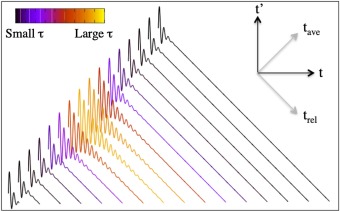Abstract
Time-resolved angle-resolved photoemission spectroscopy is one of the most powerful pump–probe measurements of materials driven far from equilibrium. Unlike the linear-response regime, where the frequency-dependent response function is independent of time, in a far-from-equilibrium experiment, the response function depends on two times in the time domain. In this work, we describe how one can use time-dependent frequency response functions and how they involve contributions from times that are near to each other. This implies that they should not be thought of as a frequency-dependent response at a single definite time. Instead, the Fourier uncertainty relations show that they involve contributions from ranges of times and must be interpreted in this light. We use this insight to help understand what time-resolved photoemission measurements actually measure.
